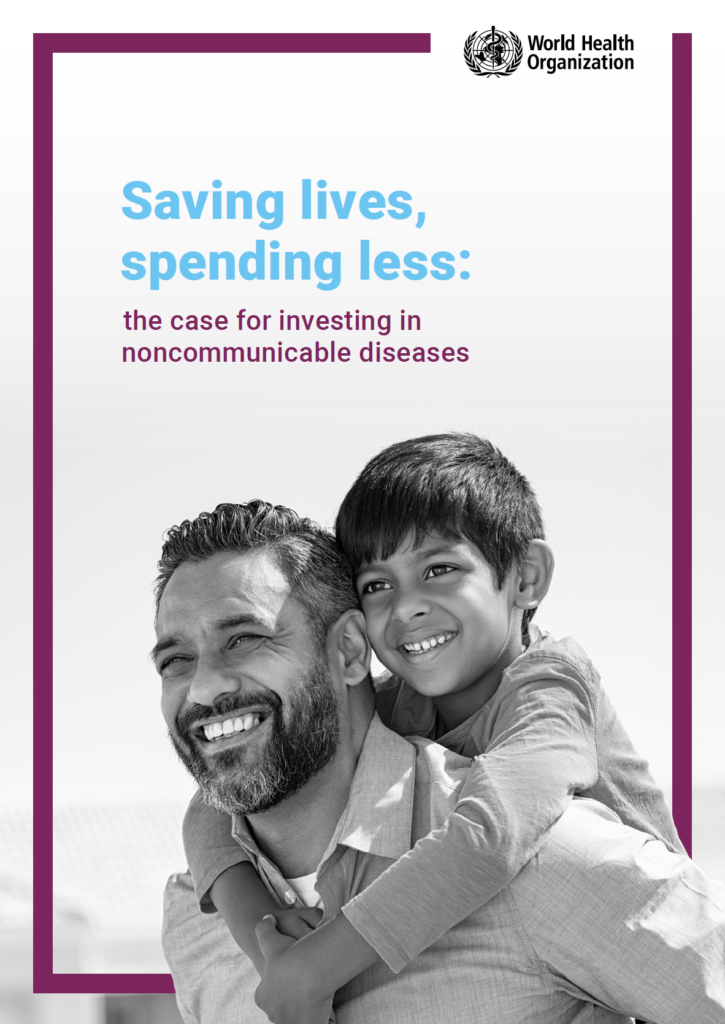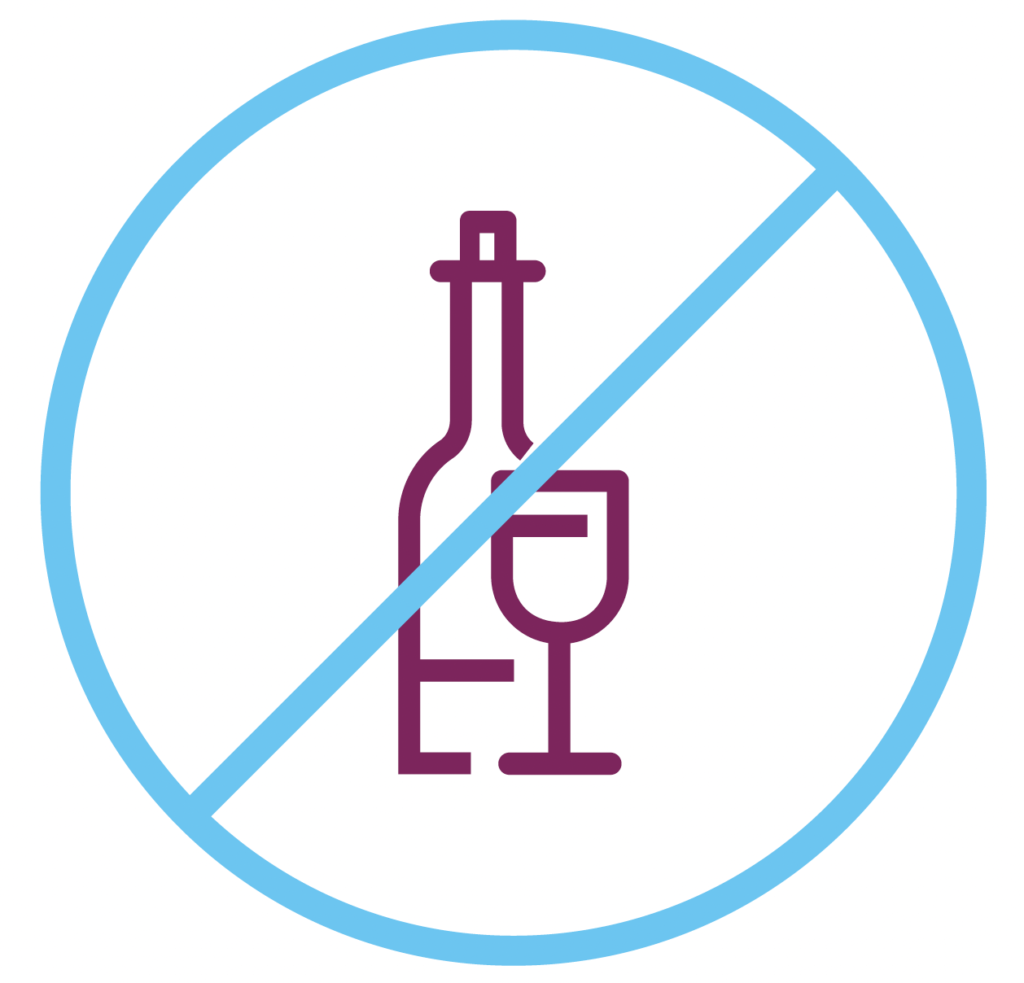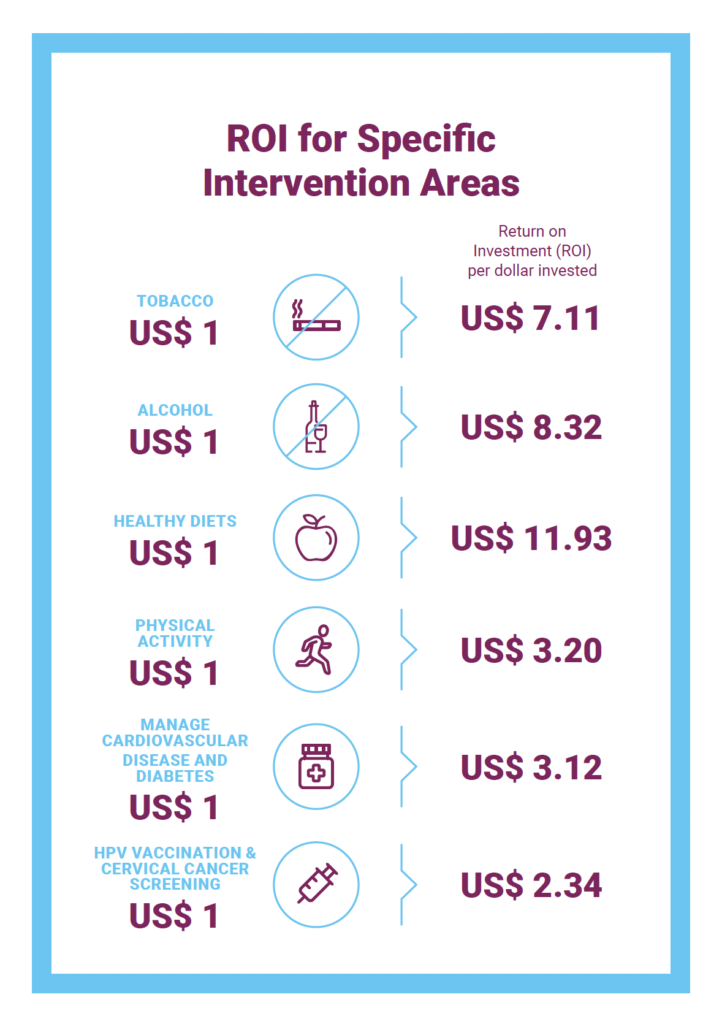A new World Health Organization report shows that close to seven million deaths could be prevented by 2030, if low and lower-middle income countries were to make an additional investment of less than a dollar per person per year in the prevention and treatment of noncommunicable diseases (NCDs).
NCDs – which include heart disease, diabetes, cancer, respiratory disease, and mental ill-health, as well as major risk factors including alcohol and tobacco – currently cause seven out of every ten deaths around the world. 85% of premature deaths (between ages 30-69) from NCDs occur in low- and middle-income countries, making them a huge health and socioeconomic burden.
The vast majority of those deaths can be prevented using WHO’s tried and tested NCD ‘Best Buy’ interventions. These include cost effective measures to reduce tobacco and alcohol use, improve diets, increase physical activity, reduce risks from cardiovascular diseases and diabetes, and prevent cervical cancer.
Keeping people healthy reduces health costs, increases productivity and leads to longer and healthier lives.
With the right strategic investments, countries that bear a significant amount of the NCD burden can change their disease trajectory and deliver significant health and economic gains for their citizens,” says WHO Director-General Dr Tedros Adhanom Ghebreyesus.
In a world filled with uncertainty, one thing we can be certain of is that without action, NCDs will continue to be a significant threat to global health. Investing in these evidence-based policies is an investment in a healthy future.”
Dr Tedros Adhanom Ghebreyesus, Director-General, World Health Organization
Saving lives, spending less
Saving lives, spending less: the case for investing in noncommunicable diseases, focuses on 76 low- and lower-middle-income countries.
The report explains the NCD Best Buys and shows how every dollar invested in scaling up Best Buy actions in these countries could generate a return of up to USD 7 – potentially USD 230 billion by 2030.
The report emphasizes the urgency of investing in NCD prevention and management given that the COVID-19 pandemic has highlighted how many of these diseases can worsen outcomes for COVID-19.
By investing in the 16 recommended Best Buy policies, countries will not only protect people from NCDs, but also reduce the impact of infectious diseases like COVID-19 in the future.
Saving lives, spending less – the case for alcohol policy best buy solutions
Best Buy actions include increasing health promotion taxes, restrictions on marketing and sales of harmful products, information and education, and vaccination. They also include actions connected to managing metabolic risk factors, such as hypertension and diabetes, in order to prevent more severe disease or complications.
Noncommunicable diseases take a terrible health and economic toll, especially on countries that can least afford it,” says WHO Global Ambassador for NCDs and Injuries Michael R. Bloomberg.
We know the prevention measures that work best, and hopefully this new report leads more governments to take the smart, cost-effective actions that can help save millions of lives around the world.”
Michael R. Bloomberg, WHO Global Ambassador for NCDs and Injuries
The alcohol policy best buys are:
- Increase excise taxes on alcoholic beverages,
- Enact and enforce bans or comprehensive restrictions on exposure to alcohol advertising (across multiple types of media), and
- Enact and enforce restrictions on the physical availability of alcohol in sales outlets (via reduced hours of sale).
The alcohol policy Best Buy solutions have already been successfully implemented in several countries around the world. One country that exemplifies the real-world impact of implementing the alcohol policy best buys is the Russian Federation:
In 2003, the Russian Federation had one of the highest levels of alcohol consumption
in the world:
- 20.4 liters of alcohol per capita.
These heavy and hazardous alcohol use patterns were associated with high mortality and other harm. For example, heavy alcohol consumption contributed significantly to low life expectancy for men.
However, by 2016, alcohol consumption had been reduced by almost half, to 11.7 liters per capita.
This was achieved through applying the Best Buys for alcohol – taxation and price increases, restrictions on the physical availability of alcohol and bans on alcohol marketing as part of Russia’s national strategy for reducing alcohol consumption.
Return on investment in alcohol policy Best Buys
Regarding the return on investment, the alcohol policy Best Buy solutions are the second best set of options among all 16 NCD Best Buys.
Investing US$1 in the implementation of the three alcohol policy Best Buys generates a return on investment of more than US$8.
Governments have committed to and endorsed the Best Buys
In 2017, the World Health Assembly endorsed a package of 16 affordable, cost-effective
and evidence-based NCDs interventions. These are known as the NCD Best Buys. They focus on addressing the major NCD risk factors – tobacco use, alcohol use, unhealthy diets and inadequate physical activity – and management of priority disease areas – cardiovascular disease, diabetes and cervical cancer.
Despite the devastating impact of NCDs and the availability of evidence-based solutions to reduce their impact, there continues to be massive underinvestment in the best buys, especially with regards to the alcohol policy best buys.
The investment case presented in the new report examines in more detail the costs and benefits of using the Best Buys for low-income countries (LICs) and lower-middle-income countries (LMICs). It highlights how a relatively modest investment can help prevent NCDs and deliver significant benefits.
The interventions are all relatively inexpensive and require little capital investment, but could help avoid much of the high cost of treatment in future. The report also indicates that while each of the interventions can be implemented individually, the effects are stronger and produce a greater return on investment when introduced together.
With marginalized groups often at greater risk from the physical and financial impact of NCDs, the interventions may also help to reduce health and economic inequalities.
This analysis shows that an additional investment of US$ 0.84 per person per year in LICs and LMICs could deliver a package of measures that will reduce the burden of NCDs.
The measures would reduce tobacco and alcohol use, improve diets, increase physical activity, reduce the risk of cardiovascular diseases and diabetes, and prevent cervical cancer.
The calculation takes into account the human and capital resources needed to fully implement the NCD Best Buys in LICs and LMICs. The amount invested represents approximately 5% of annual domestic government health expenditure in these countries – a relatively low figure, considering the health burden it addresses. If grouped by income classification, the average per capita investment required is even less for LICs: US$ 0.51 annually. For LMICs the per person average is US$ 0.90.
How can financing be raised for these measures?
Alcohol and other pro-health taxes belong to some of the most promising financing opportunities emerging in the NCD space.
Health promotion taxation
| WHAT? | Increased excise taxes on tobacco, alcohol and other health-harming products. |
| WHY? | Raising taxes on tobacco and alcohol is a proven, efficient and cost-effective way for governments to reduce consumption and related harms and raise additional revenue. |
| SUPPORTING EVIDENCE | Taxation of tobacco and alcohol are both Best Buys. In 2010, the World Health Report wrote: “Raising taxes on alcohol to 40% of the retail price could have [a big] impact. Estimates for 12 low-income countries show that [alcohol] consumption levels would fall by more than 10%, while tax revenues would more than triple to a level amounting to 38% of total health spending in those countries. Even if only a portion of the proceeds were allocated to health, access to services would be greatly enhanced.“ |
Alcohol Taxes Mobilize Resources to reach Health and Development for all
The Task Force on Fiscal Policy for Health analyzed the impact of tobacco, alcohol, and sugary beverage taxes in the Philippines, South Africa, and Mexico, respectively. And it simulated tax increases that raised tobacco, alcoholic and sugar-sweetened beverages prices by up to 50%.
WHO recommends setting excise taxes on tobacco at a minimum of 70% of retail price. But no similar recommendations have been established for alcohol so far.
- Alcohol taxes resulted in both a decrease in demand for alcohol products and an increase in revenues.
- Alcohol taxes can bring in the most additional revenue in large part because alcohol taxes are currently low and consumption is widespread.
- Over 50 years, a tax that increases alcohol prices by 20 percent over current levels could generate almost US$9 trillion in additional revenues in present discounted value.
- For a 50% increase, the gain could be almost US$17 trillion in additional revenues – 3 times more than the BRICS country governments collected in revenues in 2017 (US$5.4 trillion).
The magnitude of the global NCDs burden
- NCDs such as cancer, diabetes, heart disease, chronic respiratory diseases and stroke have a major impact on health and well-being and are responsible for around 74% of global deaths every year.
- NCDs such as diabetes, heart disease, cancer, chronic respiratory diseases and stroke kill 41 million people annually and damage the health of millions more.
- These conditions often strike when people are in their most productive years, with more than 15 million people dying prematurely between the ages of 30 and 69 each year.
- 85% of all premature deaths caused by NCDs occur in low- and middle-income countries.
- On top of the human toll, this also means that these countries are the most affected by the economic losses connected to NCDs.
- Premature deaths take away individuals during their most productive economic years, reducing human capital and decreasing productivity while increasing costs from serious illness, disability and death.
- In addition to ending lives prematurely, NCDs cause lasting social and economic harm to individuals, their families, communities and countries.



